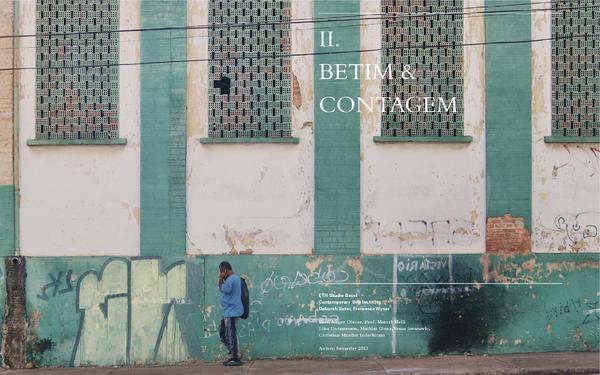Betim & Contagem - Production and Location

Deborah Suter, Francesca Wyser
Belo Horizonte is the third biggest city in economical terms in Brazil and the one with the highest growth rate. Traditionally the region was devoted to mining, and the city emerged as an important industrial center. Today the production industry only contributes to around 15% of the city’s GDP but its presence in the city is still vivid. Belo Horizonte was in a way deliberately created as a center for alternative economical activities not (only) directly dependent on the mining industry that had evolved and dominated the surrounding area and the state of Minas Gerias during the last centuries.
After the creation and realization of the first city plan with its orthogonal urban blocks, the ‘suburban belt’ and supporting agricultural areas of the city soon failed in hosting the growing population. With the intention to support the economical and industrial development urban areas like the hexagonal plan of the Industrial City in Contagem (1940’s) was implementation continues with one of the later examples being the Fiat plant in Betim. In the case of Fiat their policy to demand a ‘just in time’-system of subcontractors consequentially led to a whole production network of support industries to the car industry developing in and around Belo Horizonte. Driving out of the city along the westbound road of BR-381 the Contagem Industrial City, Petrobras, and Fiat dominate the landscape, but it’s also clear that the use of the land has partly been changed and one reads instead of several dispersed entities one continuous urban fabric, as the housing has consolidated all the separate pieces together. Questions being sought to address in this work relate to this ‘second economic surge’, and how it has changed and organized the territory in and around the city. The different kind of urban ‘spin-offs’, legal or ill-legal land occupations and infrastructural measurements these industrial areas generated and generate, financed by private or public means, have also been investigated. With the tendency today being an economical orientation towards the service sector, information technology and biotechnology, one also wonders if and how these older areas are changing, i.e. what their vitality is to the city today.

